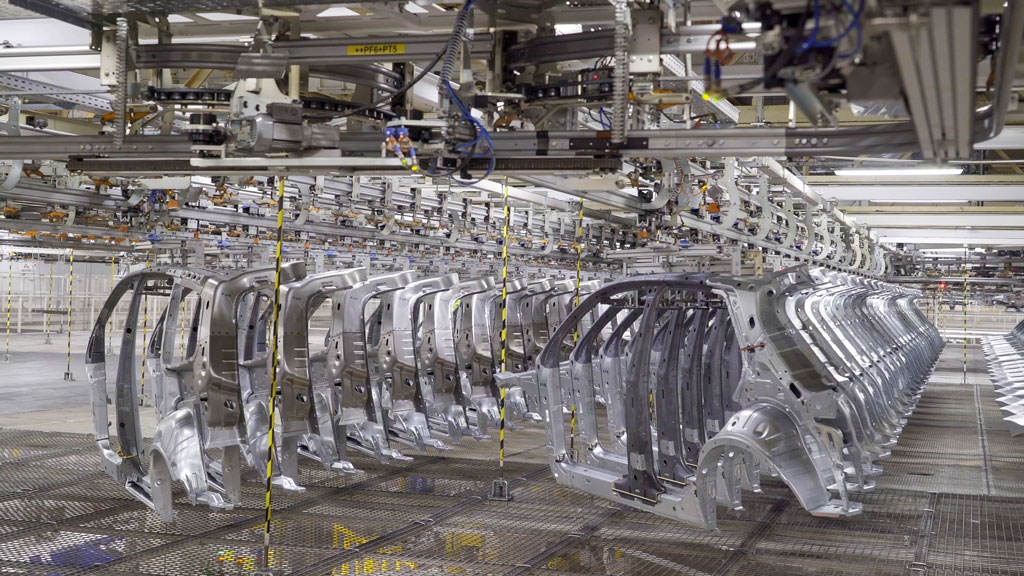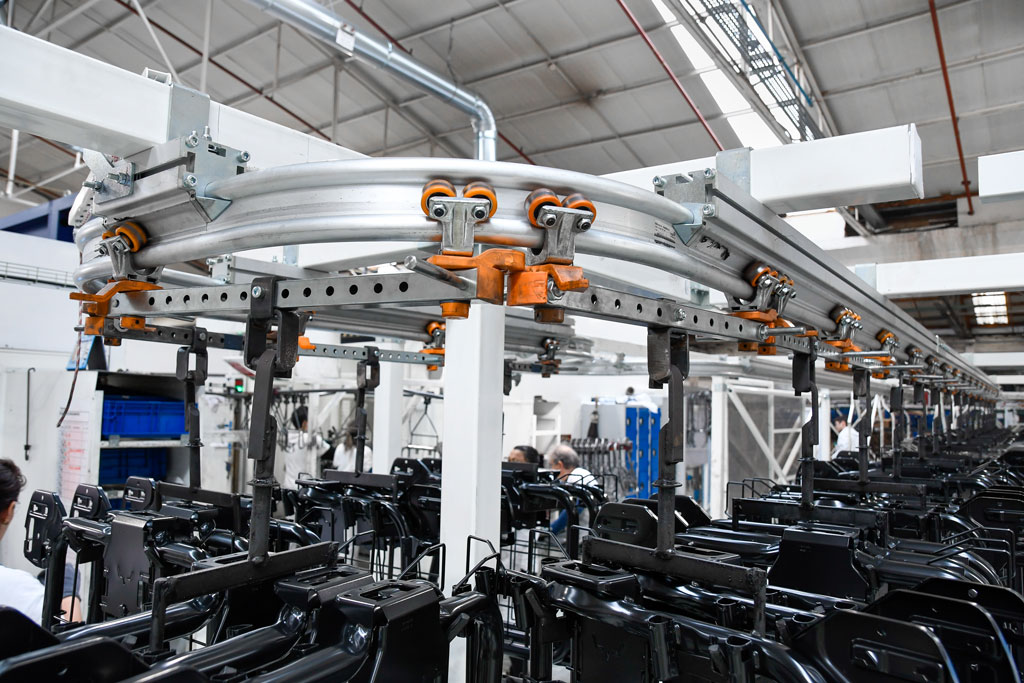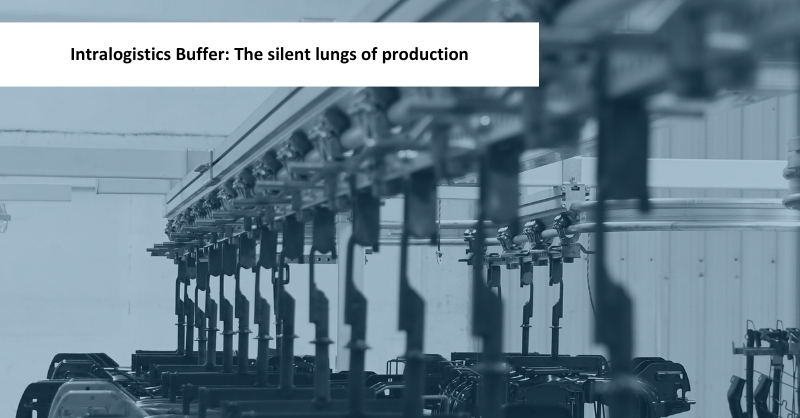In intralogistics, attention often goes to the most visible and spectacular elements: the speed of a conveyor, the capacity of a warehouse, or the precision of a picking system. Yet, there is a much more discreet component that, when properly designed, can make the difference between a smooth material flow and a bottleneck that slows the entire operation: the intralogistics buffer.
Also called a accumulation buffer or intermediate storage area, this system stabilizes the workflow, absorbs production peaks, and keeps operations running even during high-pressure moments.
A buffer works like the lungs of a facility: it temporarily stores parts or materials so that when one part of the process stops or slows down, the rest of the plant can continue without disruption. In short, it’s a silent regulator that keeps the system stable.
What is an intralogistics buffer?
Simply put, a buffer is a space or system designed to temporarily store products or components at a strategic point in the material flow. Its main purpose is to decouple processes that operate at different speeds, preventing a stoppage in one area from halting the entire production line.
Its value goes far beyond that: a well-sized buffer, correctly integrated into the facility layout, not only stabilizes production but also improves efficiency, optimizes space usage, and increases operational flexibility.
In today’s industrial environment, where customers demand shorter lead times and high levels of customization, having a logistics buffer is a competitive advantage. It enables companies to meet demand without overdimensioning resources or adding unnecessary costs.
Types of buffers and their features
Not all buffers are the same. Their design depends on the type of product, production rate, and available space. Generally, they fall into two main categories:
Automated Buffers

- Integrated into overhead conveyors or other automated systems for suspended part storage in specific zones.
- Include stop stations or track switches to create buffers according to production logic.
- Provide full traceability via RFID or barcode systems.
- Can operate on multiple levels and be managed from the plant control system or WMS.
- Reduce manual handling, improving safety and ergonomics.
Manual or Semi-Automated Buffers

- Simple solutions such as accumulation bars, workstation stocks, or small intermediate storage areas.
- Low-cost implementation and easy integration into existing layouts.
- Can incorporate pick-to-light for faster identification and reduced errors.
- Ideal for low-runner references or short-term production peaks.
Examples of intralogistics buffer by function
Beyond their level of automation, buffers can also be categorized by the role they play in the material flow:
- Intermediate buffer: Positioned between two processes that are not synchronized (for example, painting and assembly). Absorbs differences in pace so that one process does not halt the other.
- Sequence buffer: Arranges parts in the exact order they will be consumed, essential in Just-In-Sequence (JIS) environments. Ensures precise, orderly deliveries and eliminates sequencing errors.
- Inbound/Outbound buffer: Consolidates materials before shipping or stores incoming products before they are processed. Reduces waiting times and optimizes truck loading and unloading.
- Safety buffer: A reserve of materials to protect production from unforeseen incidents, such as supplier delays or critical equipment failures. Not always in use, but essential to avoid extended downtime.
Benefits of implementing an intralogistics buffer
- Stabilized material flow: Acts as a shock absorber, reducing the impact of variations in production. If a machine stops temporarily or a process slows, the buffer keeps feeding the next stage of the line.
- Improved overall efficiency: By preventing unexpected stoppages, it enhances OEE (Overall Equipment Effectiveness), minimizing downtime and optimizing resources.
- Flexibility in changing conditions: Absorbs demand fluctuations, shift changes, scheduled maintenance, and even the introduction of new models or SKUs.
- Reduced risks in Just-In-Sequence (JIS) operations: Provides a safety margin to ensure parts arrive in the correct sequence and on time, avoiding costly penalties.
- Optimized space usage: Especially in suspended-part or overhead storage solutions, buffers take advantage of otherwise unused cubic space, freeing up valuable floor area.
Keys to an effective buffer
For a buffer to be truly useful, it’s not enough to simply “set aside space to store parts.” Its design must be based on a detailed analysis of material flow, required capacity, and replenishment frequency. Some key recommendations include:
- Strategic placement: Install it at a point in the flow where it can absorb stoppages without disrupting other operations.
- Optimal capacity: Size it to cover recovery time for the most probable disruption without over- or under-dimensioning.
- Accessibility and ergonomics: Ensure easy loading and unloading, especially for manual buffers.
- Integration with plant control: In automated systems, it must be part of the overall control logic.
- Preventive maintenance: Even the simplest buffers need regular inspections to ensure they’re ready when needed.
Give your production room to breathe
A well-designed intralogistics buffer or accumulation area works like a healthy lung for the plant: it regulates the pace, provides room to adapt to unforeseen events, and keeps production alive even in moments of highest pressure.
At Esypro, we believe that when simplicity is applied with precision, it can support highly complex systems with exceptional reliability. That’s why every buffer or intermediate storage solution we design—whether in an overhead conveyor or as a manual solution—starts with a detailed study of material flow, actual capacity needs, and the optimal way to integrate it into the layout.
If you want your intralogistics to run with greater stability and fewer disruptions, we’d be happy to review your case and propose a solution that fits your needs.
Let’s talk about optimizing your material flow.
